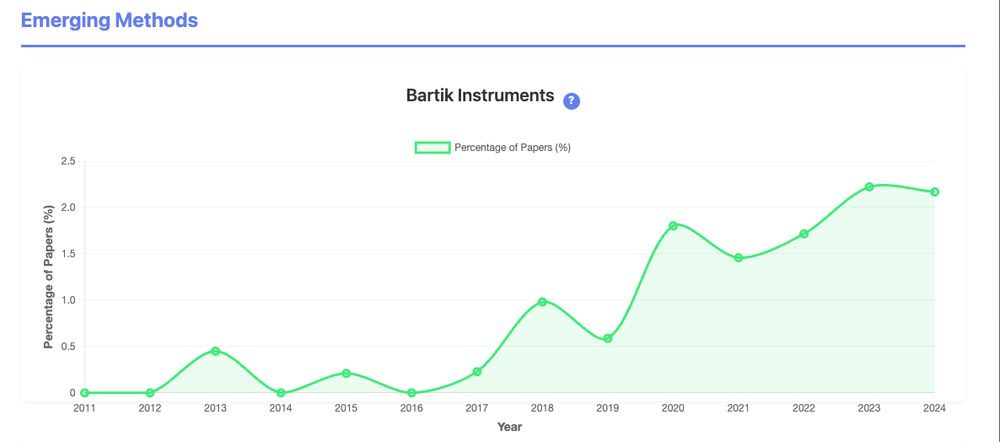
With my amazing grad student Tianshu Lyu www.tianshulyu.com, who is on the market. You should hire him!
paulgp.com/papers/finan...


With my amazing grad student Tianshu Lyu www.tianshulyu.com, who is on the market. You should hire him!
paulgp.com/papers/finan...

👉 Theme? “Causal inference in health, economic and social science”
👉 When? April 14-17
👉 Where? Oxford
👉 Register? eurocim.org/oxford-2026/...

👉 Theme? “Causal inference in health, economic and social science”
👉 When? April 14-17
👉 Where? Oxford
👉 Register? eurocim.org/oxford-2026/...
Synthetic Parallel Trends (Liu) Popular empirical strategies for policy evaluation in the panel data literature -- including difference-in-differences (DID), synthetic control (SC) methods, and their variants -- rely on key identifying assumptions that can be expressed through a specific
Synthetic Parallel Trends (Liu) Popular empirical strategies for policy evaluation in the panel data literature -- including difference-in-differences (DID), synthetic control (SC) methods, and their variants -- rely on key identifying assumptions that can be expressed through a specific
A sensitivity analysis for the average derivative effect (Zhang) In observational studies, exposures are often continuous rather than binary or discrete. At the same time, sensitivity analysis is an important tool that can help determine the robustness of a causal conclusion to a certain
A sensitivity analysis for the average derivative effect (Zhang) In observational studies, exposures are often continuous rather than binary or discrete. At the same time, sensitivity analysis is an important tool that can help determine the robustness of a causal conclusion to a certain
Boundary Discontinuity Designs: Theory and Practice (Cattaneo, Titiunik, Yu) We review the literature on boundary discontinuity (BD) designs, a powerful non-experimental research methodology that identifies causal effects by exploiting a thresholding treatment assignment rule based on a b
Boundary Discontinuity Designs: Theory and Practice (Cattaneo, Titiunik, Yu) We review the literature on boundary discontinuity (BD) designs, a powerful non-experimental research methodology that identifies causal effects by exploiting a thresholding treatment assignment rule based on a b



Prediction-Guided Active Experiments () arXiv:2411.12036v1 Announce Type: cross
Abstract: Here is the revised abstract, ensuring all characters are ASCII-compatible:
In this work, we introduce a new framework for active experimentation, the Prediction-Guided Active Experiment (PGAE), w
Prediction-Guided Active Experiments () arXiv:2411.12036v1 Announce Type: cross
Abstract: Here is the revised abstract, ensuring all characters are ASCII-compatible:
In this work, we introduce a new framework for active experimentation, the Prediction-Guided Active Experiment (PGAE), w
statmodeling.stat.columbia.edu/2025/10/16/a...
statmodeling.stat.columbia.edu/2025/10/16/a...
We can think about proximal causal inference as an extension of the standard identification assumptions to allow for more rich data structures. Specifically, we can account for unmeasured confounding
We can think about proximal causal inference as an extension of the standard identification assumptions to allow for more rich data structures. Specifically, we can account for unmeasured confounding

A note on the relation between one--step, outcome regression and IPW--type estimators of parameters with the mixed bias property (Rotnitzky, Smucler, Robins) Bruns-Smith et al. (2025) established an algebraic identity between the one-step estimator and a specific outcome regression-type e
A note on the relation between one--step, outcome regression and IPW--type estimators of parameters with the mixed bias property (Rotnitzky, Smucler, Robins) Bruns-Smith et al. (2025) established an algebraic identity between the one-step estimator and a specific outcome regression-type e
statmodeling.stat.columbia.edu/2025/09/28/v...
statmodeling.stat.columbia.edu/2025/09/28/v...
www.pnas.org/doi/10.1073/...

www.pnas.org/doi/10.1073/...
Non-overlap Average Treatment Effect Bounds
https://arxiv.org/abs/2509.20206
Non-overlap Average Treatment Effect Bounds
https://arxiv.org/abs/2509.20206
led by Susie Ellul, with Stijn Vansteelandt & John Carlin
Published in Stats in Med
Check it out 👇
onlinelibrary.wiley.com/doi/10.1002/...
#EpiSky #CausalSky

led by Susie Ellul, with Stijn Vansteelandt & John Carlin
Published in Stats in Med
Check it out 👇
onlinelibrary.wiley.com/doi/10.1002/...
#EpiSky #CausalSky
For example: what would faces look like if they were all smiling?
arxiv.org/abs/2509.16842



For example: what would faces look like if they were all smiling?
arxiv.org/abs/2509.16842
DoubleGen: Debiased Generative Modeling of Counterfactuals (Luedtke, Fukumizu) Generative models for counterfactual outcomes face two key sources of bias. Confounding bias arises when approaches fail to account for systematic differences between those who receive the intervention and thos
DoubleGen: Debiased Generative Modeling of Counterfactuals (Luedtke, Fukumizu) Generative models for counterfactual outcomes face two key sources of bias. Confounding bias arises when approaches fail to account for systematic differences between those who receive the intervention and thos
Variable Selection for Additive Global Fr\'echet Regression (Yang, Bhattacharjee, Xue et al) We present a novel framework for variable selection in Fr\'echet regression with responses in general metric spaces, a setting increasingly relevant for analyzing non-Euclidean data such as probab
Variable Selection for Additive Global Fr\'echet Regression (Yang, Bhattacharjee, Xue et al) We present a novel framework for variable selection in Fr\'echet regression with responses in general metric spaces, a setting increasingly relevant for analyzing non-Euclidean data such as probab
Robust Sensitivity Analysis via Augmented Percentile Bootstrap under Simultaneous Violations of Unconfoundedness and Overlap
https://arxiv.org/abs/2509.13169
Robust Sensitivity Analysis via Augmented Percentile Bootstrap under Simultaneous Violations of Unconfoundedness and Overlap
https://arxiv.org/abs/2509.13169
Weakening assumptions in the evaluation of treatment effects in longitudinal randomized trials with truncation by death or other intercurrent events
https://arxiv.org/abs/2509.10067
Weakening assumptions in the evaluation of treatment effects in longitudinal randomized trials with truncation by death or other intercurrent events
https://arxiv.org/abs/2509.10067


